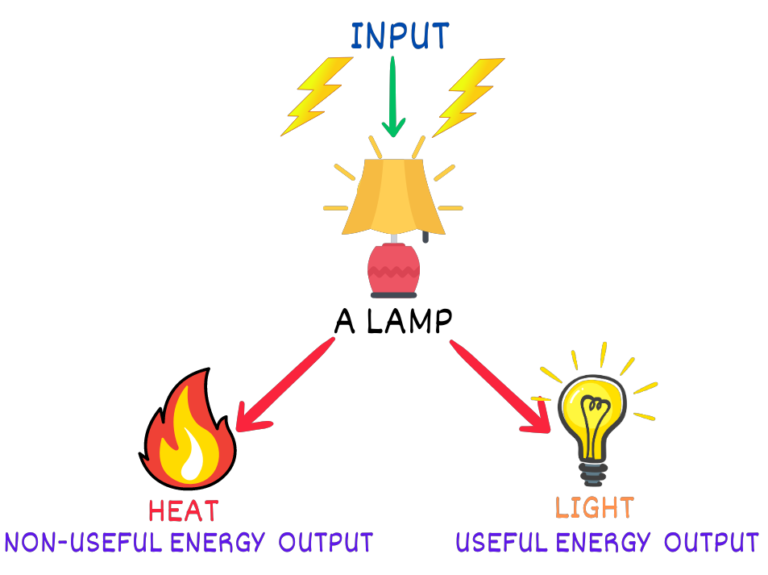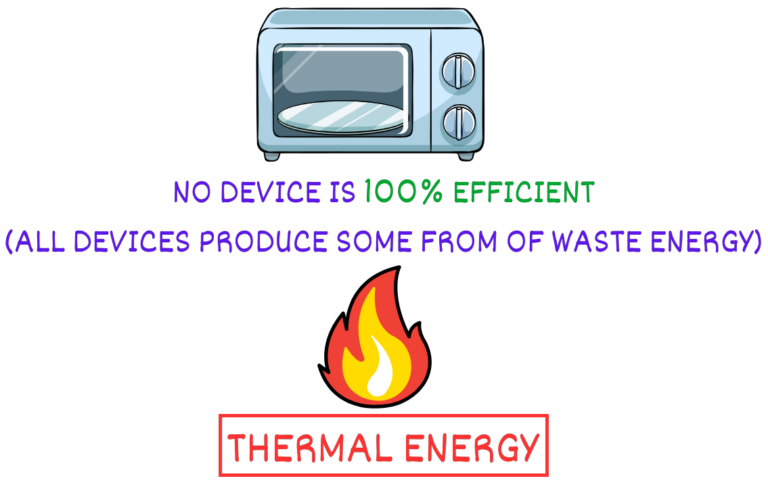Efficiency Matters: A Deep Dive into Energy and Power
In the realm of physics, where energy is the currency that fuels our universe, the concept of efficiency plays a pivotal role. It’s a metric that tells us how effectively a device or system converts input energy into the desired output energy. While we often wish for everything to be 100% efficient, the reality is that most devices fall short of this ideal, inevitably producing some form of wasted energy.

In this journey through the fascinating world of efficiency, we will uncover its intricacies, understand how to calculate it and explore its real-world applications.
Whether you’re preparing for your upcoming studies or seeking to deepen your knowledge, take the next step by clicking this link: Physics Private Tutoring
Unlocking the Mysteries of Gravity, Weight, and Energy delves deep into the fascinating realm of physics, offering insights into fundamental principles. Explore this captivating topic now: Unlocking the Mysteries of Gravity, Weight, and Energy
Contents
Chapter 1
The Essence of Efficiency
Efficiency, in the realm of physics, is a measure of how well a device or system converts its input energy into the desired output energy. It provides insight into how effectively we harness energy for various purposes.

Devices and systems are rarely, if ever, 100% efficient. Some portion of the input energy often transforms into waste energy, which is energy that doesn’t contribute to the device’s intended function.

To gain a deeper understanding of the concept, let’s take a common household device as an example: a lamp. A lamp’s primary function is to provide light. Consequently, we classify light energy as useful energy output, while heat energy, typically produced as a byproduct, is categorized as waste energy or non-useful energy output.

Chapter 2
Efficiency in Energy and Power
Efficiency can be expressed as either a decimal or a percentage, depending on the context. When calculating efficiency, two primary scenarios must be considered: energy and power.

Energy Efficiency:
Energy efficiency assesses how effectively a device converts input energy into useful output energy. It is expressed as a decimal and can be calculated using the following equation:
Efficiency (as a decimal) = Useful Energy Output / Total Energy Input

Power Efficiency:
Power efficiency focuses on the rate at which energy is converted. It evaluates how effectively a device transforms input power into useful output power. Power efficiency is also expressed as a decimal and can be calculated using the equation:
Efficiency (as a decimal) = Useful Power Output / Total Power Input

In both scenarios, the resulting decimal can be multiplied by 100 to express efficiency as a percentage.
Chapter 3
Practical Calculation: Comparing Two Lamps
Let’s apply our newfound knowledge of efficiency to a practical example.


Solved Example: Imagine we have two lamps, and we supply 300 joules of energy to each of them. The first lamp employs an old incandescent bulb, which effectively converts 45 joules of the 300 into light energy. The second lamp boasts a modern LED bulb, which transforms 225 joules into light energy. How many times more efficient is the LED lamp compared to the incandescent one?

Solution:
To calculate the efficiency of each bulb, we employ the energy efficiency equation. For the incandescent bulb:
Efficiency = Useful Energy Output / Total Energy Input
Efficiency = 45 joules / 300 joules = 0.15
For the LED bulb:
Efficiency = 225 joules / 300 joules = 0.75
Now, to determine how many times more efficient the LED lamp is, we divide its efficiency (0.75) by that of the incandescent bulb (0.15), yielding a value of 5. In essence, the LED lamp is five times more efficient in converting energy into light.

If you prefer these efficiency figures in percentage terms, simply multiply them by 100. So, the incandescent bulb has an efficiency of 15%, while the LED bulb shines at 75%. Dividing the LED’s 75% by the incandescent’s 15% still gives us the same result: the LED lamp is five times more efficient.

Avoiding Common Pitfalls
When calculating efficiency, there are a few common pitfalls to watch out for. One of the most crucial aspects is ensuring that you don’t reverse the division in the equation. Swapping the numerator (useful output) and denominator (total input) will yield a value greater than one or greater than 100%, which is impossible. Remember the fundamental principle of the conservation of energy: energy can neither be created nor destroyed; it can only be transferred or transformed.

Real-World Application
In the real world, achieving 100% efficiency is an elusive goal. All devices and systems inevitably produce some form of waste energy, often in the form of thermal energy.

However, there are exceptions to this rule. Devices whose primary function is to produce heat, like electric heaters, are unique. In their case, thermal energy isn’t waste; it constitutes useful output.

Chapter 4
Conclusion
Efficiency is a fundamental concept that governs the energy transformations within devices and systems. It quantifies how effectively energy is converted from one form to another, shedding light on the performance of various devices. Whether you’re evaluating the efficiency of lamps, engines, or other mechanisms, understanding efficiency equips you with the tools to unveil the secrets of energy transformation.

Efficiency serves as a guiding light, illuminating the path to a more sustainable and energy-efficient future.
As you delve deeper into the captivating world of physics, remember that efficiency is your ally, empowering you to optimize energy usage and reduce waste. Whether you’re a student, scientist, or simply someone curious about the workings of the universe, efficiency is a cornerstone concept that enhances our understanding of the world around us.

Uncover deeper insights by clicking the link: Energy Unveiled.




